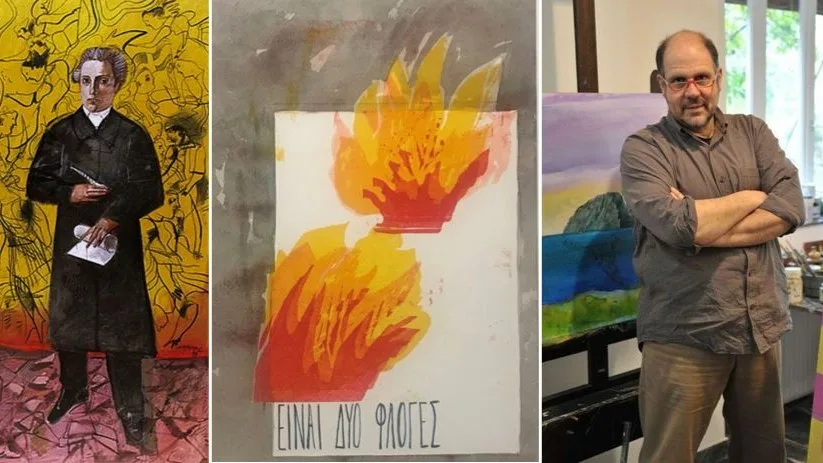By George Vardas
In 2023, an exhibition entitled “Dionysios Solomos… Two Flames… Manolis Charos” was staged in Athens and then in Kefalonia in a stunning artistic tribute to Greece’s national poet, Dionysios Solomos.
The exhibition featured mixed media artworks by the acclaimed Kytherian painter and engraver, Manolis Charos, who was inspired by the legendary Solomos’ writings and his poetry of revolutionary Romanticism, together with manuscripts and rare editions, periodicals, letters and translated texts from the collections of the Gennadius Library, the National Library, the Ionian Academy, the Academy of Athens and the Museum of Solomos and Eminent Zakynthians.
Dionysios Solomos, was born in Zakynthos (then known as Zante) in 1798. He went to Italy to study and then returned to Zakynthos before settling in Corfu where he lived until his death in 1857. He was influenced by his Italian upbringing but was persuaded on his return to write poetry and satire using demotic (or spoken) Greek.
In 1821, the Greek struggle for independence from the Ottoman Empire began in earnest and the revolutionary fervor that spread through Europe also inspired poets and artists both in England on the continent.
In 1823, Solomos was following the course of the revolutionary struggle. A writer and historian, Spyridon Trikoupis was passing through Zante on his way to Corfu and challenged the young poet to write a poem in Greek to celebrate some of the Greeks’ early successes. Solomos responded with his epic poem, Hymn to Liberty, the first two stanzas of which went on to become the Greek national anthem composed by Nicholas Mantzaros, a Corfiot musician and also a friend of Solomos. The words powerfully invoked the personified image of Liberty, reborn and renewed out of “the sacred bones of the Greeks.”
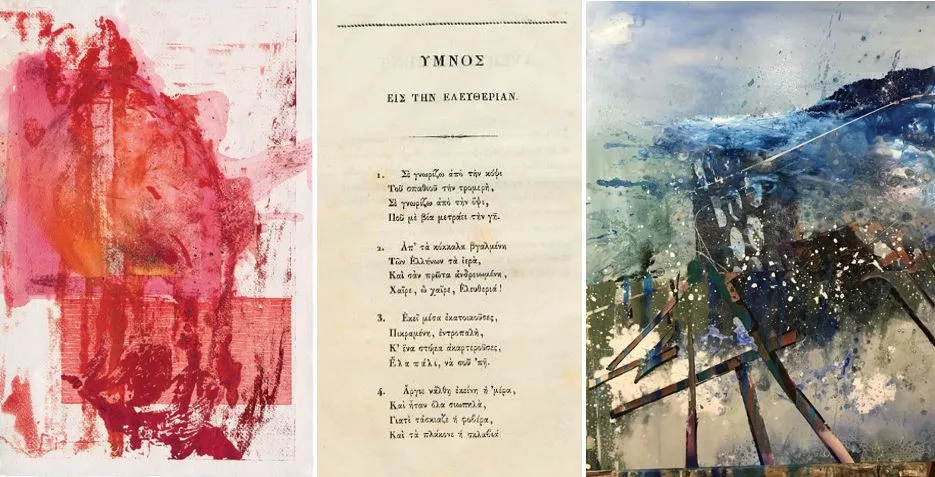
Manolis Charos was born in Kythera in 1960. He grew up in Athens and in 1977 went to Paris to study painting and printmaking and later attained postgraduate honours in visual communication. Apart from Athens, he has held individual exhibitions in Thessaloniki, Paris, Bologna and London. His works are represented in significant private collections in Greece, France, Germany, Italy, the USA, as well as in public museum collections both in Greece and abroad.
Charos traditionally uses various media and materials, with an emphasis on the poetic use of colour. He often paints scenes alluding to myths.
In the “Two Flames” exhibition the artist is in a visual dialogue with the poetic work of Dionysios Solomos, with the dark blues and the fiery oranges and reds overwhelming the eye, reflecting through flowing compositions the raging sea and the storm, the night sky, the flames, the tension from past revolutions and tragic events of our age.
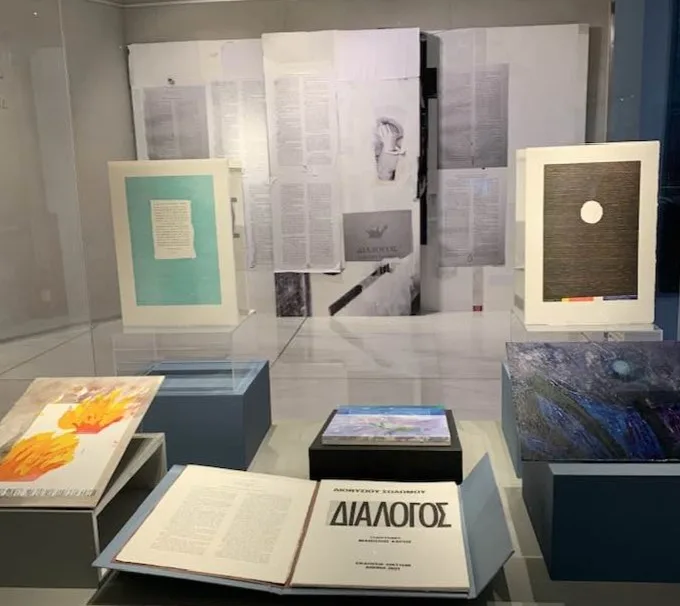
In 1824, Solomos had composed The Dialogue, his treatise on the Greek language and its inextricable relationship with the spoken language of the people as opposed to the formal katharevousa, in which he urged: “firstly succumb to the language of the people and then, if you are worthy, conquer it.”
Manolis Charos reinvigorates the Dialogue through his art and indeed this poem was his main inspiration for the exhibition because, according to the Kytherian-born artist, Solomos’ poetry shaped the identity of all of us, given that at the time the Greek nation was created as an idea and existed only through its language. The National Poet of Greece had managed to capture the identity of the nation through the concept of freedom that people were fighting for.
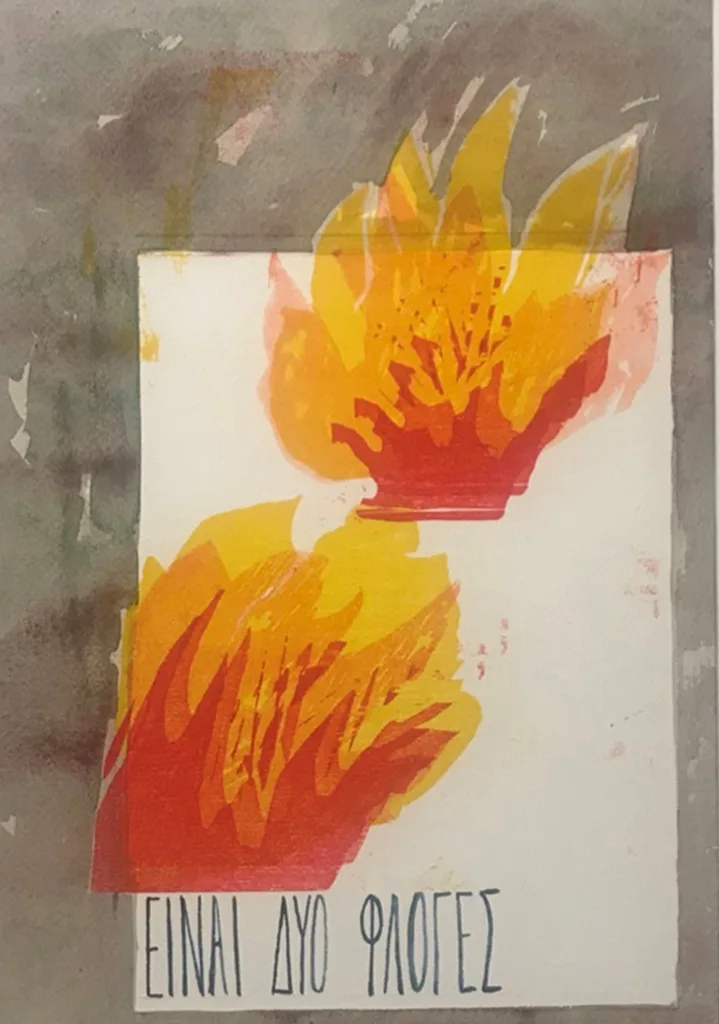
The “two flames” symbolise the heart and mind with which the poet approaches the world. The flames, the moon and the sea became the word-images that guide Manolis Charos in his visual engagement with the lyricism of Solomos, and with freedom and language.
As the director of the Gennadius Library and curator of the exhibition, Maria Georgopoulou, wrote in the catalogue to the exhibition: “The revolutionary romance of Charos meets Solomos, but it is not a simple illustration of the text… With the visual eye, the revolutionary power of language, the debate on personal and collective identity and the flame of inspiration transmuted into creation that speaks directly to the soul in the present time.”
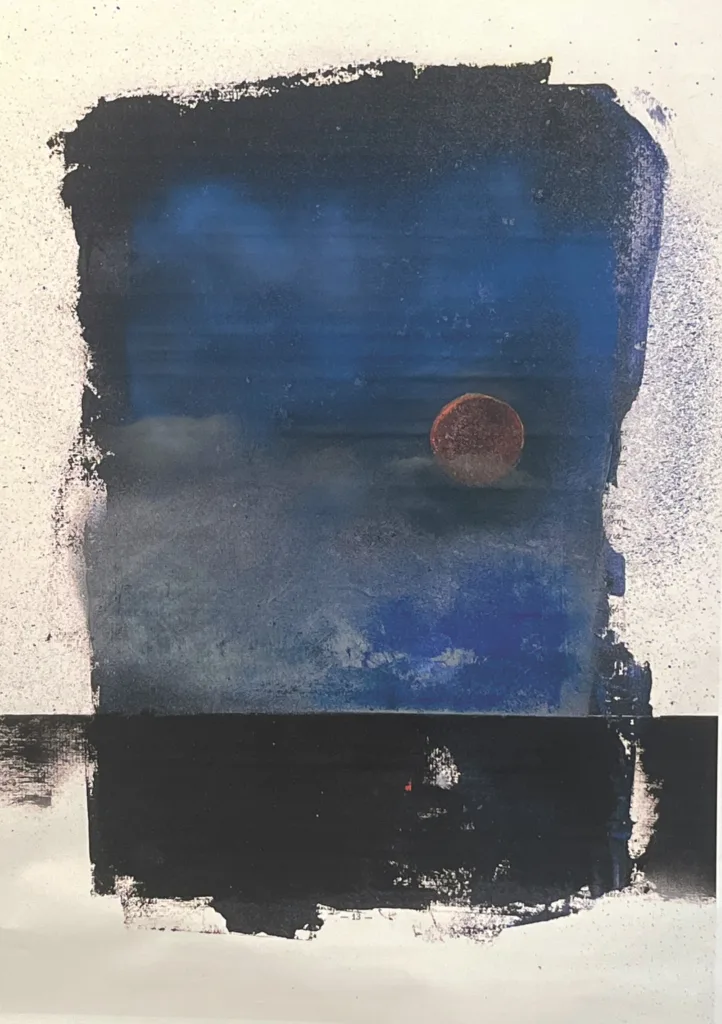
The other outstanding work was even more poignant.
In 1833, Solomos wrote, O Kritikos (The Cretan), which is the story of a shipwreck of a group of distressed refuges from Crete in 1826 during the Greek War of Independence during which the Cretan survivor vainly tries to save his beloved from the tempest.
A central point in the work is the apparition of an oracle, the Φεγγαροντυμένη (or ‘moon-clad woman’) who according to David Ricks, Emeritus Professor of Modern Greek and Comparative Literature, is none other than the immortal soul of his beloved, which briefly lingers above her lifeless body to bid him farewell before ascending to heaven:
“I looked, and still far distant was the shore.
‘Blest thunderbolt, give light, I pray, once more!
And now at last the shore. I laid her head
Upon the strand with joy, but she was dead.”
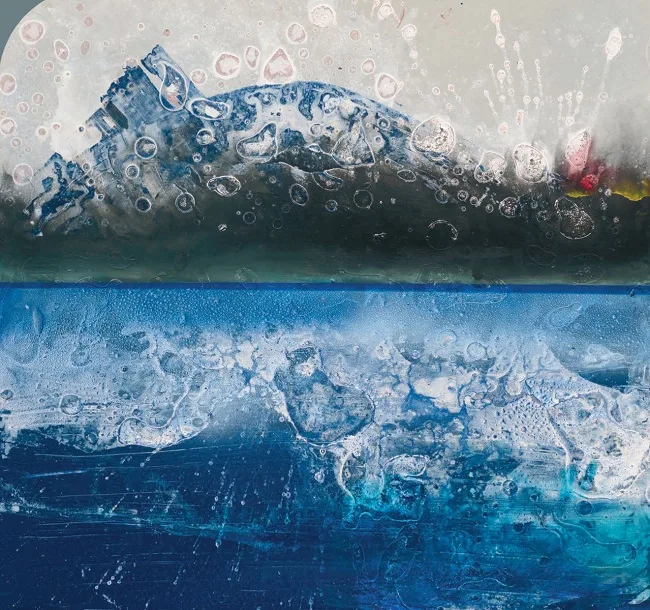
On the evening of October 5, 2022 , Manolis Charos was on Kythera when, together with other residents of the island, he learned that a hapless boat carrying Afghan refugees had crashed onto steep rocks on the eastern side of the island and sank. He immediately rushed to the scene where he saw images of an indescribable tragedy in the midst of dramatic rescue efforts on a precarious cliff by the locals.
According to Manolis Charos, his mind went straight to the poem O Kritikos: “It was revelatory for me because I also realised that issues such as refugees, love, the drama of the person who loses the other half is as ‘old’ as today and tomorrow … When I found myself in front of the cliff in Kythera, I realised that I am living the “Cretan”.
Solomos’ test, dealing with the maelstrom of war, the difficulties of refugees and the loss of humanity, is transformed into militant art: a protest, a mirror of a real nightmare, the collective truth of the tragedy of refugees when the intensity of the sea and the watery elements extinguishes human lives.
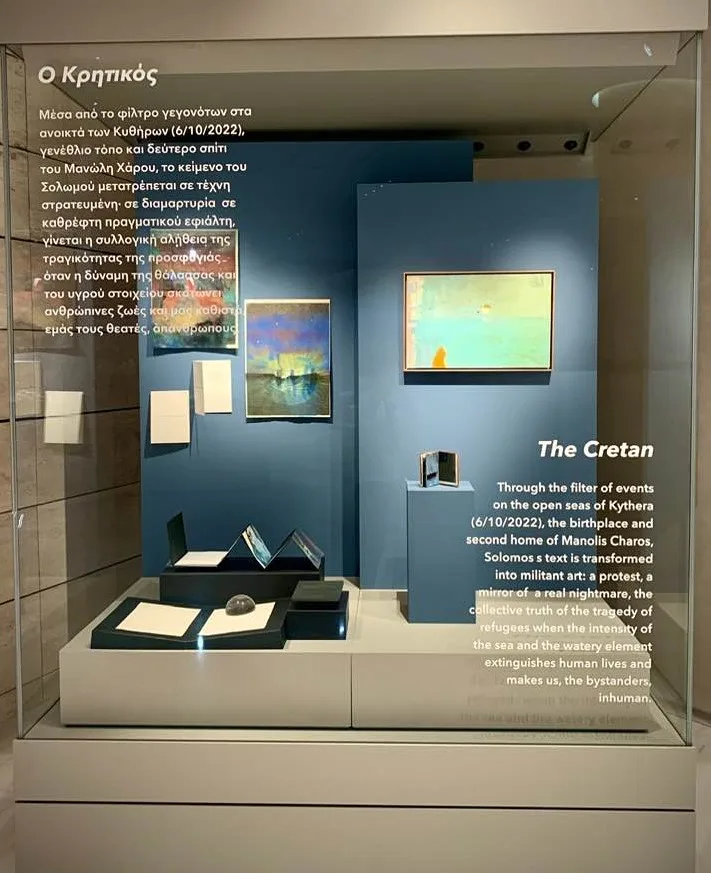
Indeed, in one of the showcases one can see a small tribute to the great, albeit unfinished, poem of Solomos: “I’m hanging deep on a cliff, and I’m standing alone.”
Other works of the painter, of mixed technique, emphasise the revolutionary character of Solomos, including a painting, as if part of a giant poster, that preaches fragmentarily “Freedom or Death”.
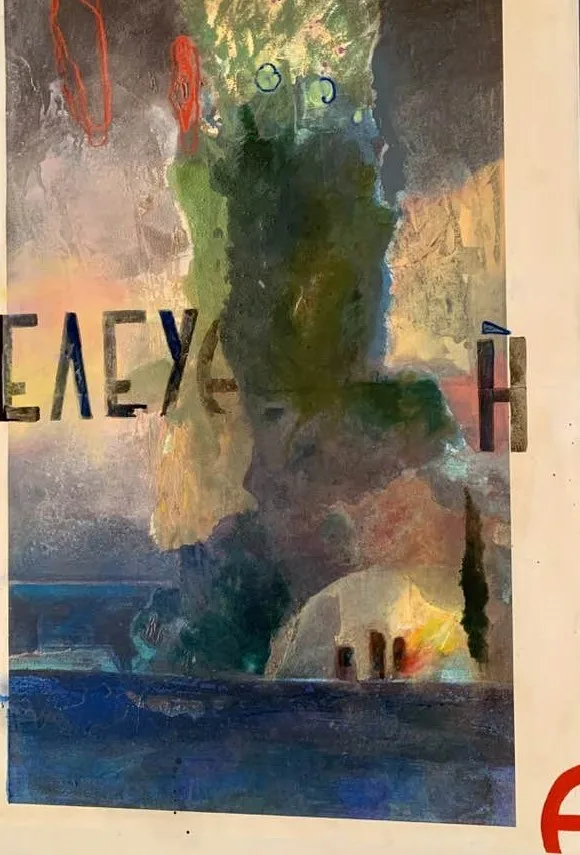
The former President of the Hellenic Republic, Prokopios Pavlopoulos, in hismessage of greetings delivered at the opening of the exhibition in Kefalonia, spoke of Manolis Charos’ “osmosis” with the spiritual heritage and revolutionary romanticism of Dionysios Solomos and praised the artist for how his paintings embody the vastness of the sea in all its manifestations and expressions, from serenity to storm and with the almost always present Moon, and the resultant “explosion” of colours.
Despite the 200 years that separate the text of Dionysios Solomos from Manolis Charos’ art, the Eptanesian revolutionary spirit (emerging through a poet from Zante and later Corfu, to an artist from Kythera and an exhibition opened in Athens but crowned in Kefalonia) still prevails today.
